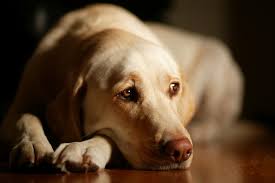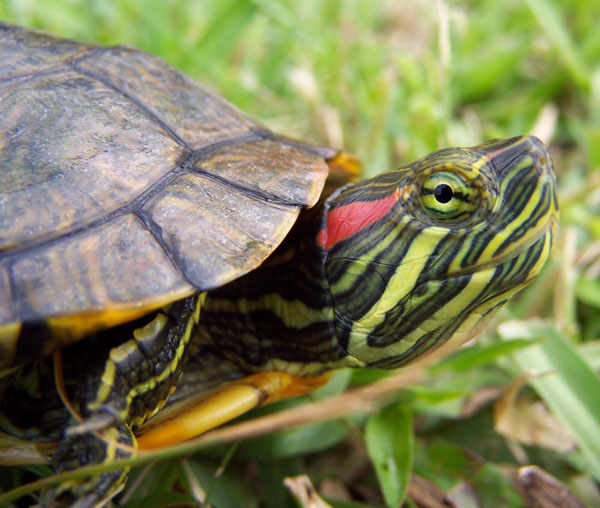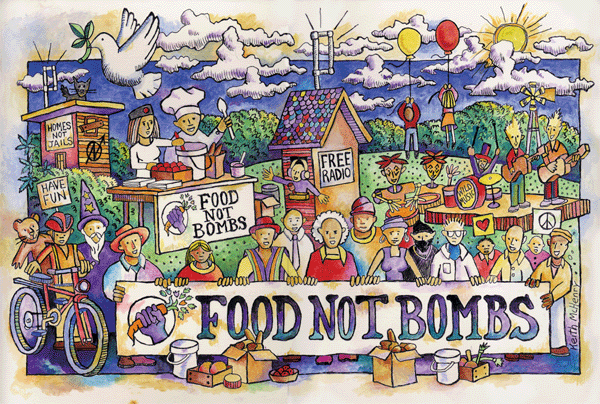I think dogs are the most amazing creatures; they give unconditional love. For me they are the role model for being alive. ~Gilda Radner
During the course of everyone’s life a good dog is necessary. At least one good dog. Some people are lucky. They have lots of great dogs. One of my students’ has a pack of beagles. I met a couple. They seem like good ones. Some are lucky enough to have back-to-back good dogs. One good dog dies, they wait a while, and they get another one.
I know that some would disagree. There are a lot of “cat people” out there. Don’t get me wrong, I’m not a “dog person” per se. I like cats too. But in my experience there is nothing quite like the love of a good dog. I have one now. And she has me.
I have lived with a number of dogs in the past. But just one good dog. When I was a kid my folks got a French poodle. A little white one. Louis was sort of a rescue dog. He belonged to a teacher buddy of my mom. Like a lot of young couples, they had him for about a year (the “practice kid” I guess you might say) got pregnant, had a baby, put Louis in the basement, felt guilty, gave him to us. He had his good side. He came house broken (interesting term). Definitely a plus. He didn’t shed. Another plus. But he was an incessant yapper. When the mailman came, he yapped this screechy little dog bark. Company?
I think he was a “toy” poodle. Bigger than a “teacup” and smaller than a… whatever the medium size is. I liked Louis OK. I mean I shared a house with him through a lot of my formative years. But I liked him more like a house plant than a friend. It was embarrassing when my friends would come over and he would bark his head off. He was defensive of his food too. It was like he thought you were going to take it from him every time you fed him. Seriously, you would pour his food into the bowl and then he would immediately start growling at you to get away or else.
When Heidi and I were young-married, she got me a cocker spaniel pup for my birthday. He was a very beautiful animal with long lashes, a beautiful tan coat, and huge brown eyes. Lovely. Tawny was the kind of animal that you just wanted to hug on. And while he was a puppy, that was okay. He was fun to walk with. When he was a puppy, he would grab the nearest branch when we walked him. Even if the branch was bigger than he was, he would dutifully hold it in his jaws and drag it along with us. I guess he thought that was his work.
When Tawny got to be six or eight months old, the Mr. Hyde in him started showing up. At first it was just growling, then nipping. My friend John was definitely not fond of dogs. He was one of your “cat people”. He tried to be nice to Tawny but it was a façade. John would dutifully look into Tawny’s big brown eyes and pretend that he wanted to pet him. Tawny would stand up and lean on John’s leg to be petted and take a pee all over his shoes.
Then when certain folks would come over to the house, Tawny would go nuts and we would have to isolate him until they left. Eventually, one of the people he started tormenting was Heidi. She tried to be brave and commanding as we were told by the dog trainer. Didn’t work. Tawny saw straight through that. After he bit her on the thigh through her jeans I took him straight to the vet’s office and signed the euthanasia papers. Heidi came to the office to save him in the classic nick of time. We ended up giving him to a guy in town. Tawny bit him in the butt. That guy ended giving Tawny to a country farmer where I presume he lived out his days terrorizing the farm animals.
Then we got the classic house dog. She had lived for about six months in a kennel before she came to us so it was very difficult to house train her. She was a cool little dog. Portia was a mix between a poodle and a schnauzer. A schnoodle if you will. She was smallish and gentle, didn’t shed, and didn’t growl… much. Training her was crazy. I had to set the alarm clock for every two hours at night when she was young to make sure she could do her business outside. Eventually it worked.
I am embarrassed to admit it, but she was racist. Whenever we were walking and she saw an African American, she would bark and growl like a mad dog. When a Black delivery person would come to the door she went nuts. Who knows where that came from?
I guess Tawny and Portia were our “starter kids”. We schlepped them along on vacations and to our family’s homes on visits. I took Portia to the airport a couple of times to pick up Heidi from trips. Looking back it seems pretty ridiculous. The final straw for Portia was her being mean to the babies. I know a lot of people who have gone through the same thing. Before kids, your dog is one of the most important parts of your life. After kids, they drop precipitously to a lower rung on your priority ladder. Such is life. When she snapped at our six-month-old-crawling-Colin, that was the end of her for us. We gave her to an educator acquaintance of Heidi’s who was a single mom with a teenage daughter. Portia lived out her days loving and being loved with no distracting little babies around.
About ten years ago I was in the pool store buying chemicals when I saw this cute little yellow lab puppy sniffing around inside the store. Travis, the pool store guy, raises and sells labs on the side. When I first saw Sasha she was making a mess, chewing on things she shouldn’t in the store, peeing on the carpet, etc. Puppy stuff. Adorable if it’s not your dog, right? When she sat down it was VERY unladylike. She sort of had one hind leg sitting up straight and one slung out to the side. Man, she was cute! I called Heidi and the boys (about 5 and 7 at the time) and asked that they come to the store and check out this puppy for sale. I’d been the holdout on getting another dog. Heidi and the boys had wanted a dog for a while so when I called they were very excited.
Our neighbors had a black lab named Tina who was this lumbering gentle giant. She would amble over when I got home from work, lie down on her back and beg you to pet her. She was irresistible. Tina loved our boys and they loved her so a lab was just right. Tina was sort of a block dog, spending most of her day wandering the neighborhood, soliciting affection and raiding other dog’s food bowls, eventually including Sasha’s. Since we already loved a lab, Sasha was the perfect choice.
The rest is history. She was the last of her litter to be bought. She sat crookedly and didn’t have the perfect posture of a purebred lab. That’s the only reason I can think of. We could have registered her with the American Kennel Club but really didn’t see the need to. She was loved up by the boys, played with every day, and her constant shedding wasn’t a real problem because she slept in the garage at first. We installed a dog door so she could wander the neighborhood as she pleased during the day, hang out with Tina and the other country block dogs, and she’d be there to greet us when we got home.
She wasn’t a perfect dog by any means. Often when she would greet us with her dog grin and wagging her whole body to demonstrate her joy at our returning, she would have some old dead flattened squirrel or some other road kill in her mouth. Or she simply smelled terribly of a dead fish that she had no doubt spent the better part of an afternoon coating herself in. Her days as a garage dog were a little messy. She chewed up dog bed after dog bed and anything else that was in her easy grasp.
In 2000 I got a new car. A
Over the years she has developed a mean streak toward other dogs. Not all other dogs, she has her neighborhood pals, but when she sees an enemy her hackles rise and she growls a pretty ferocious growl. Now she is walked on a leash. When I attach the leash to her collar, she grabs it in her strong jaws and sort of walks me.
She is an indoor/outdoor dog now. Outside during the day when we are away, inside whenever she wants when we are home. We don’t let her wander for fear of her harming the neighborhood enemies. I put little handles on the bottom of the screen doors so she can let herself into the screened porch when she wants to. Now she walks us nearly every evening after work. When she becomes aware that we are heading out she gets obnoxiously anxious. Before doing anything else every morning we have a five minute pat and rub and pet session. She rolls onto her back with her big pink tongue lolling out the side of her mouth.
She is always glad to see me. She is never mad, never holds a grudge. She is never petty or jealous or rude (well, she is a bit of a crotch sniffer). She loves unconditionally. It’s mutual.
Her muzzle is getting white now, her face sagging a bit. She doesn’t pull as hard as she used to on our walks and the idea of fetching for me is long since past. I tried it the other day. She just looked at me like I was crazy. Sometimes we have to drop her off at the house when we are walking because she is worn out. She rises slower from the ground than she used to. She never chews things she shouldn’t anymore. She has mellowed. When we got her I was 42. She was born in late May, so I gave her my birthday. So, when she turned 7 (49 in dog years) I turned 49 too. Now I am 52 and she’s 70 (in dog years). She is aging gracefully. Perhaps more gracefully than me.
I think we are drawn to dogs because they are the uninhibited creatures we might be if we weren't certain we knew better. They fight for honor at the first challenge, make love with no moral restraint, and they do not for all their marvelous instincts appear to know about death. Being such wonderfully uncomplicated beings, they need us to do their worrying. ~George Bird Evans, Troubles with Bird Dogs
And when her time to go has passed
And she’s buried at the bottom of the hill…
I’ll think of her and that pretty yellow face
And I know I’ll love her still ~Tim O’Keefe



